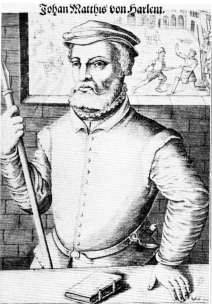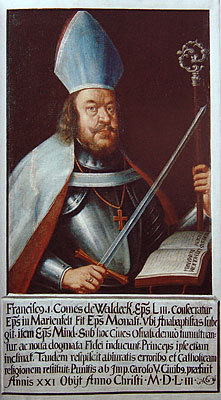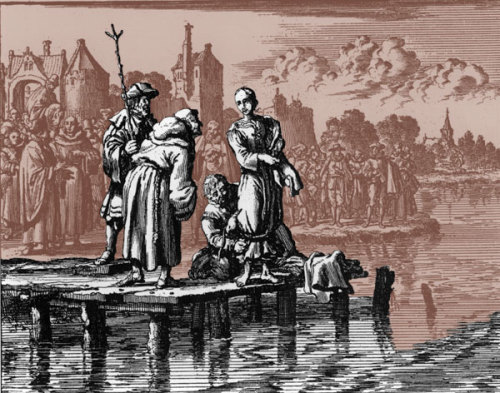Rebellion of the Radicals Part I— The Munster Rebellion,Radicalism comes in many forms; radica
Rebellion of the Radicals Part I— The Munster Rebellion,Radicalism comes in many forms; radical politics, radical social beliefs, and radical religions. When it comes to radical religion, most modern peoples tend to picture radical Islam, especially those members of ISIS who are responsible for the many woes currently happening in the Middle East. But radicalism is something common to all races and religions, throughout all times in history. In the 16th century there were a group of Christians called the Anabaptists, who would leave their own mark of racialism in Europe and the Americas. Shortly after the beginning of the Protestant Reformation a wide variety of Protestant sects were created. Martin Luther and his Lutheran movement was a fairly conservative movement, seeking only to right the wrongs of the Catholic church. Around the 1520’s, a sect called the Anabaptists formed which would take a much more radical approach when it came to the Reformation. The Anabaptists were named because they believed that only consenting adults should be baptized (“ana” means second, thus “second” baptism). However, the Anabaptists believed in more than just a reformation of religion, but of society itself. Hated by established monarchs and Martin Luther himself, the Anabaptists believed in the overthrow of traditional society, which was to be replaced with a theocratic utopian society that adhered to a strict fundamentalist interpretation of the Bible. They believed that people should live in a society without class, wealth, or private property, that all things should be shared equally in a communal lifestyle, and most importantly; that they were the one true religion. Viewed a radicals by their contemporaries, the Anabaptists were heavily persecuted all over Europe.The vast majority of Anabaptists were pacifists, following a path of non-violence and peace. However in Europe there arose a few noted sects who were much more radical and militant than their contemporaries. One particularly militant Anabaptist was a Dutch preacher named Jan Matthys (middle picture, left). Matthys preached that the end of the world was near, and that the second coming of Jesus, and the establishment of God’s Holy Kingdom on Earth was soon to occur. Moreover, he believed these events would occur in the City of Munster, Germany. Matthys was a very charismatic man, a man who wore the clothing of a begger, never bathed, ate insects like John the Baptist, and who claimed to personally communicate to God. By communicate I mean he literally talked to thin air, and a voice in his head talked back. He was noted by non-believers for carrying on spirited conversations out of the blue with an invisible person, which he believed was God standing right next to him. Today such a man would be considered a lunatic, in 16th century Europe he was hailed as a prophet. Matthys preached that all Anabaptists should move to Munster to help create the Kingdom of God. In the coming years thousands of Anabaptist took over the city, overrunning local businesses and pushing out local Catholics and Lutherans. In early 1535, Matthys arrived in Munster and declared the city the “New Jerusalem” and that his followers were the “new children of God”. He then declared that all non-believers; Catholics, Lutherans, and Jews, be expelled from the city. Thousands of non-believers were exiled from the city by force, those who refused were executed. Matthys organized the city into a new society based on Anabaptist principles. All other forms of religion were banned, private property was banned and all goods were to be held in common, laws and regulations were based upon Biblical law, and strictly upheld to the letter. Even the slightest infraction could be punished with beating, flogging, or torture, many crimes were punished with death. Matthys’ new society might have seemed like a religious utopia for those who were believers, but for the powers that be, the events that took place in Munster was a blatant act of rebellion and treason most fowl. Shortly after the uprising, the local ruler, Prince-Bishop Franz Von Waldeck (middle picture, right) laid siege to the city with a large army of German conscripts and mercenaries. While his army was powerful, his troops were often ill disciplined, leading to disaster after disaster when attempting to storm the city’s walls. In one instance, a regiment of mercenaries spent the night drinking, and when drunk attempted to storm the walls themselves without any assistance or support from the rest of the army. In the mayhem that followed, the regiment was massacred and wiped out by the besieged defenders. It was made apparent that Von Waldeck and his army were not going to win back the city very easily, but that the situation would only be solved with a long, drawn out siege.On Easter Sunday of 1535, Jan Matthys was told by God that if he would ride out with 30 faithful followers, He would give Matthys the power to single handedly destroy Von Waldeck’s army. Ever faithful to God, Matthys did as he was told, donned armor and weapons, and rode out with 30 men to meet the enemy army. They were all instantly slaughtered. Matthys was decapitated and his head was placed on a pike for all to see, his genitals were nailed to the gates of Munster as a grisly warning to the Anabaptist rebels. For the Anabaptists the death of their leader and prophet was horrifying, and many felt as though God had abandoned them. When it seemed that doubt would end the rebellion then and there, a new leader would arise, one who even crazier and more charismatic, and one who would take religious extremism to a whole new level.To be Continued -- source link
Tumblr Blog : peashooter85.tumblr.com
#history#munster rebellion#anabaptists#jan matthias#protestant reformation#religion#christianity#religious extremism#rebellion#fundamentalism



